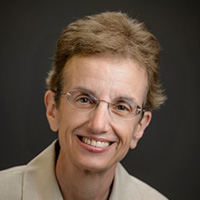Catholic to the Core
Q: Is the Omega Center “Catholic.” Is it in line with the institutional Catholic Church.
 Ilia: Recently, a question was submitted as to whether or not the Omega Center is “Catholic.” The inquirer wanted to know if the Omega Center is in line with the institutional Catholic Church. I want to affirm from the outset that, in principal, the Church is Catholic but “catholic” is more than the institutional Church. I appreciate where this inquirer is coming from, however, because I too was raised to believe that “Catholic” and “Church” were synonymous terms. One “Catholic,” “one Church,” “one truth, “one salvation.”
Ilia: Recently, a question was submitted as to whether or not the Omega Center is “Catholic.” The inquirer wanted to know if the Omega Center is in line with the institutional Catholic Church. I want to affirm from the outset that, in principal, the Church is Catholic but “catholic” is more than the institutional Church. I appreciate where this inquirer is coming from, however, because I too was raised to believe that “Catholic” and “Church” were synonymous terms. One “Catholic,” “one Church,” “one truth, “one salvation.”
My own expansion of the term “catholic” emerged at Georgetown University where I was a Senior Fellow at the Woodstock Theological Center. My colleague Fr. John Haughey, SJ had just completed a book called Where is Knowing Going? John’s study was based on a fundamental question: Is all knowledge the same, regardless whether it is sacred or secular, or is there a particular “catholic” way of knowing? John located the root of the word “catholic” in the “Letter to the Smyrneans” composed by the second century Bishop, Ignatius of Antioch (d. AD 110), as he was on his way to martyrdom.
In this letter, Ignatius spoke about the divinity of Christ, the Eucharist as medicine of immortality, the relationship between Bishop and Church, and he exhorted the faithful to gather together as the one Body of Christ. He used the Greek word katholikos (καθολικός), meaning according to (kata-) the whole (holos) to identify the purpose of the early Christians.The early Greek philosophers had coined the term “catholic” centuries before to describe a new awareness of the cosmos in which the human person existed. Christians did not invent the word “catholic”; rather they borrowed the term from the Greeks. Ignatius was a Bishop and familiar with the writings of the Greek philosophers.The word “catholic” helped him to clarify the identity of Christian life. Christians were to gather as a whole in the Body of Christ
Building on these insights, Haughey illuminates the word “catholic” as a dynamic principle of “wholemaking.” He writes, “the term catholicity promises a worldview that is universal in classical Greek: kata (a preposition) and holos (a noun) when coupled become kath’ holou, an adverb meaning ‘wholly” and katholikos, a substantive that is best rendered “catholicity” in English.”[i]
The word catholic, therefore, describes movement toward universality or wholeness. Catholicity means openness and stands in contrast to what is incomplete, partial, sectarian, factional, tribal and selective. It is a dynamic principle of gathering together what is fragmented or separated. The philologist Walter Ong likened the dynamic of catholicity to the parable of the yeast (Matt 13:33) or the gathering together into the one loaf of bread, as described in the Didache (9.4): “Even as this broken bread was scattered over the hills, and was gathered together and became one, so let your church be gathered together from the ends of the earth into your kingdom.” Ong wrote:
“Catholic” is commonly said to mean “universal,” a term from the Latin universalis. The equation is not quite exact. If “universal” is the adequate meaning of “catholic” why did the Latin church, which in its vernacular language had the word universalis, not use the word but rather borrowed from the Greek the term katholikos instead, speaking of the “one, holy, catholic and apostolic church” instead of the “one, holy, universal and apostolic church”?[ii]
Ong states that universality, as used historically by Christians, was not often an inclusive concept because everything that was not in the circle of universality was excluded from it. The word catholic, by contrast, simply means “through-the-whole” or “throughout-the-whole,” like yeast which leavens bread. It connotes an active presence of whole-making or leavening the stuff of life to create a greater whole.
The Omega center, inspired by the vision of another Jesuit, Teilhard de Chardin, is consonant with the root meaning of “catholic” or “catholicity,” that is, the Omega Center has a vision of wholeness grounded in the cosmic Christ. To “think” in terms of Omega is to think as a “catholic,” that is, to think in way that “makes greater wholes.” Since our understanding is always partial and incomplete, to think as a “catholic” is to open to more deeper and broader insights by seeking to know in a way that helps unify.
Thinking that “makes wholes” requires an openness of the mind; that is, the mind does not have pre-set ideas to be verified but is truly empty of pre-fabricated ideas or set agendas and open to the experience of concrete reality.To know is to be oriented to the real and the potentialities of being. Thinking begins with a subject’s grasp of oneself as open to the real, which is why prayer is essential to the quest for the true knowledge. Prayerful self-knowledge is that interior space of self-awareness, where the consciousness of self encounters the center of divine presence.To know “oneself” is to develop a strong grasp of one’s own subjectivity and of the operations of one’s own consciousness rather than seeking more and more information about stuff “out there.”[iii]
Catholicity is having a desire to deepen an understanding of oneself and God in the milieu. Haughey laments that in our information age “we let concepts spawned by other minds do our thinking for us.”[iv] Our educational system, he states, is like cardboard boxes in a room that someone fills with mental stuff. Information overload counters true knowledge by preventing the deepening of insights; hence, we know more and more about less and less.[v] Knowledge which forms from the dynamism of the mind’s thought processes is not simply information-gathering and certainly not storing concepts in a mental warehouse; rather, knowledge flows from that deep center of desire within the human person who is searching for truth and, ultimately, for God.
Catholicity therefore is not “doctrine” inscribed by a set of rules and rituals; rather true “catholicity” is the gathering of fragments into greater wholes, a “virtue of ceaseless wonder” that is forever looking to the future by nature of its own inner spiritual dynamism.[vi] This gathering process is the work of the Creator Spirit in our lives. It is the Spirit of God co-laboring with us to create anew, as we seek ultimate meaning and truth. Hence catholicity is not owned by the Church but it is deeply consonant of the Church’s core doctrine of incarnation as “making whole” God and human, heaven and earth, soul and body, life and death, beginning and end. That is, catholicity is a consciousness of the living Body of Christ. Thus it is an orientation toward the one, true, good and beautiful, a grace-filled orientation toward God. “God” is the name of genuine unrestricted love bubbling up at the heart of life, attracting more insight, wonder and creativity. Catholicity, therefore, is a way of knowing by which we enter more deeply into love. And this is the vision of the Omega Center.
Notes
[i] John C. Haughey, S.J. Where is Knowing Going? The Horizons of the Knowing Subject (Washington DC: Georgetown University Press, 2010) 40-59, at 40.
[ii] Walter J. Ong, “Yeast: A Parable for Catholic Higher Education,” America (April 7, 1990) 347 – 63, at 347.
[iii] Haughey, Where is Knowing Going, 42.
[iv] Haughey, Where is Knowing Going, 42 – 3.
[v] Jonah Lehrer notes that too much information can actually interfere with understanding in How We Decide (New York: Mariner Books, 2009) 164.
[vi] Haughey, Where is Knowing Going?, 44 – 6.
 View print-friendly version
View print-friendly version
14 Comments
Related Posts

A Whiteheadian Response: The God of Persuasion
Question: “Please help me to further understand, I thought that God did not direct our lives. We made choices, those choices CREATED—God’s presence is in the creation of the choice…


Thanks Ilia for filling out what “catholic” means. The manner in which you answered was indeed an exercise in whole-making. My prayer and energy is directed to the healing of fragments that have scarred the cosmos. What an awesome challenge it is to be a part of the whole-making dynamism of the cosmos, which I am convinced is wholly creative in its healing!
Thomas
Ilia, your response generates two comments. I so appreciate your rooting your thoughts in the wisdom of the past and the present, showing the development, for example, among Ignatius of Antioch, Greek philosophers, John Haughey and your evolving understandings. I found this “rootedness” to be true in both Simply Bonaventure and Crucified Love and it helps me to see that it all fits together making a whole rather than a split. Secondly, regarding “Christians were to gather as a whole in the Body of Christ.” That gathering every Sunday in my Parish where catholicity is alive is the primary reason I participate. Thank you for writing.
The initial question seems to be inherently political – are the doctrines and themes and approaches of the Omega spirituality in contradiction to or in harmony with the orthodoxy of the Church? Your response remains focused on the truths that you see as the heart of Christian spirituality.
The way you answered is a reminder to me that it is best to try to maintain focus upon these core themes, rather than falling into defensive modes of thinking and feeling.
and yet this is not how it is lived out. I wish. But instead, traveling from one city to another around the world — as a Roman Catholic I would enter into ritual and prayer and services which exclude; in fact are built upon exclusion. (not catholic or Episcopalian, not lgbtq, not believing in women-priests, not divorced, not having gone to confession, not protestant, not …… oh so many NOTs who are not welcome to Eucharist. That is the practicality. Making it all “sound good” while PRACTICING otherwise is just exhausting …. what else is it? wrong? sad? confusing? discordant? too much? Explaining and showing that the words mean something else is helpful… but how do you expand into actual practice? Catholics who “do otherwise” are still just “excommunicated.” How do you balance this? How do you stand UP for a church that continues to take so many many people down. Eucharist celebration, central to Catholicism, is meant to be an act of gratitude — and it has become an act of exclusion. HOW do you then continue to keep “that faith?”
Deanna,
All so very true, and as you say, exhausting. Which is why, the only time I frequent a catholic (small “c” intended is for a weekly Centering Prayer session, with folks who value and find their Truth in the likes of Ilia, Richard Rohr, Cynthia Bourgeault, and, yes, A Course In Miracles.
Thus, my delight in this essay by Ilia, as expressed in my separate comment, above
Deanne, it strikes me that those who excommunicate, are really excommunicating themselves, cutting themselves off from the vine and the flow of life. in truth, we must ask, who can excommunicate. This is a misguided way of seeing. All of life, the very rocks and hills are our brothers and sisters. What do they believe?
The remarkable and mystic physicist, David Bohm wrote in 1980:“Space is not empty. It is full, a plenum as opposed to a vacuum, and is the ground for the existence of everything, including ourselves. The universe is not separate from this cosmic sea of energy.”
For Bohm, wholeness (or katholikos,as Ilia describes wholeness in this essay) is not a static, contained “oneness”, but a dynamic wholeness-in-motion in which everything moves together in an interconnected process. How utterly beautiful and simple: Wholeness of the Totality of Existence as an Undivided Flowing Movement Without Borders.”
Yes, David Bohm’s insights on wholeness and healing fragmentation are wonderful. And, i believe the practice of dialogue as he proposed is a wonderful way of healing our fragmentation. And a wonderful complement to meditation.contemplation.
A wonderful reflection on the meaning of catholic, I love your description of God, ” “God” is the name of genuine unrestricted love bubbling up at the heart of life, attracting more insight, wonder and creativity.
The question addresses the ‘elephant in the room’ — a reality always present within the tensions, and struggles of the ‘institutional catholic church” of today. In the minds of some, it is used to determine human judgements as to inclusiveness and exclusiveness. . . It is critical to meditate deeply on the historic meanings of the word catholic… catholicity. . . and to express those meanings in our personal co-creative involvements…
The explanation of “Catholic “ is most comforting and real. The very last sentence after your explanation,Ilia is perfect…clearly..and this is the vision of the Omega Center!
Thank you
Bettina Del Sesto
“The church is Catholic but Catholic is more”
The movement of the Creator Spirit tried to move the Church, but the Rock of Peter seemed to resist, perhaps overcome by fear. Left to itself the Rock can die, no life, but the recent humiliation come upon it may be the force impelling it to new life!
Your statement of the Church’s core doctrine of incarnation as “making whole”God and human,heaven and earth,soul and body,life and death,beginning and end,is deeply consoling.Living this wholeness seems at the heart of non-duality.
Describing the word catholic meaning a movement toward wholeness and catholicity meaning openness— I love this!